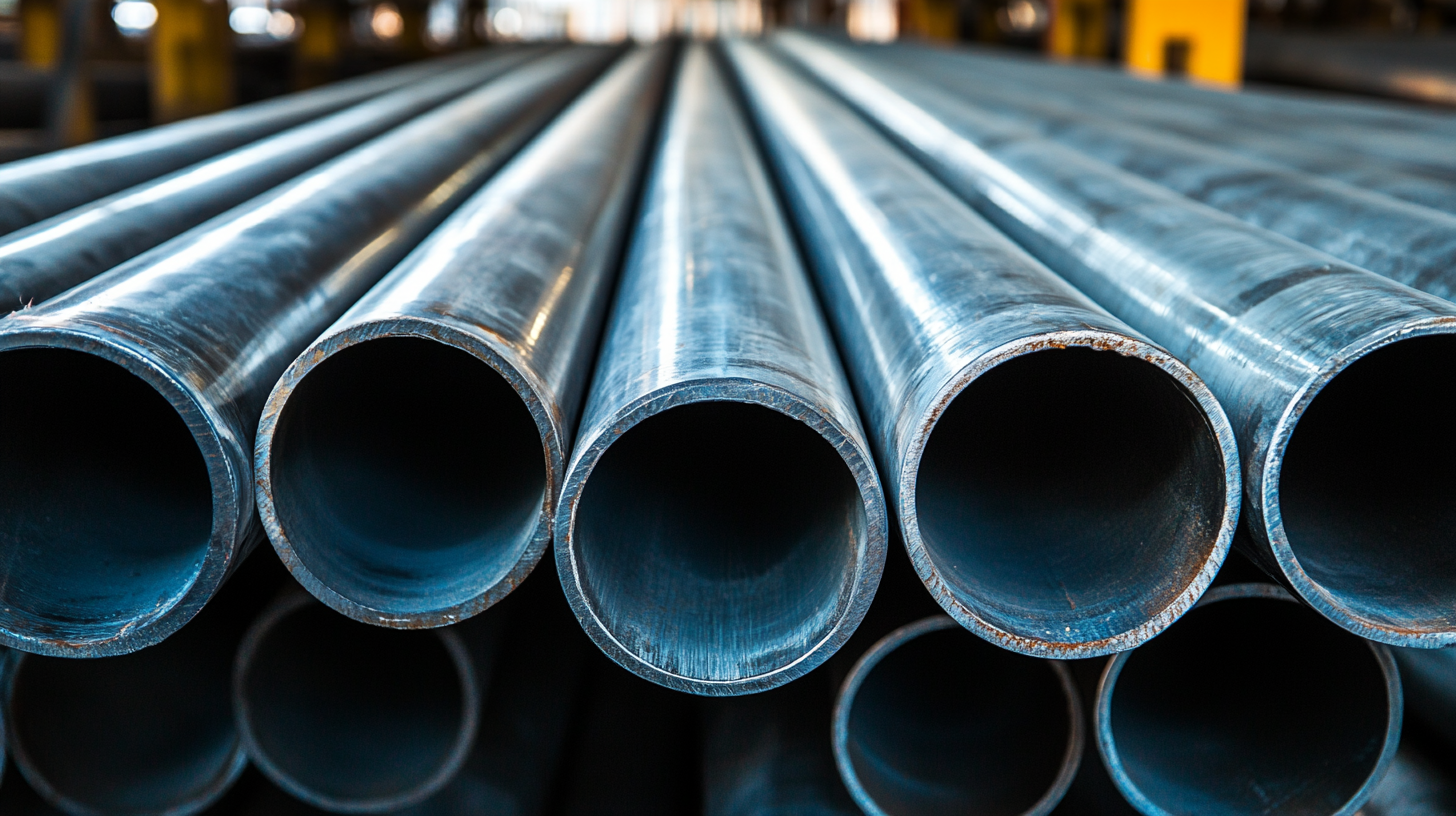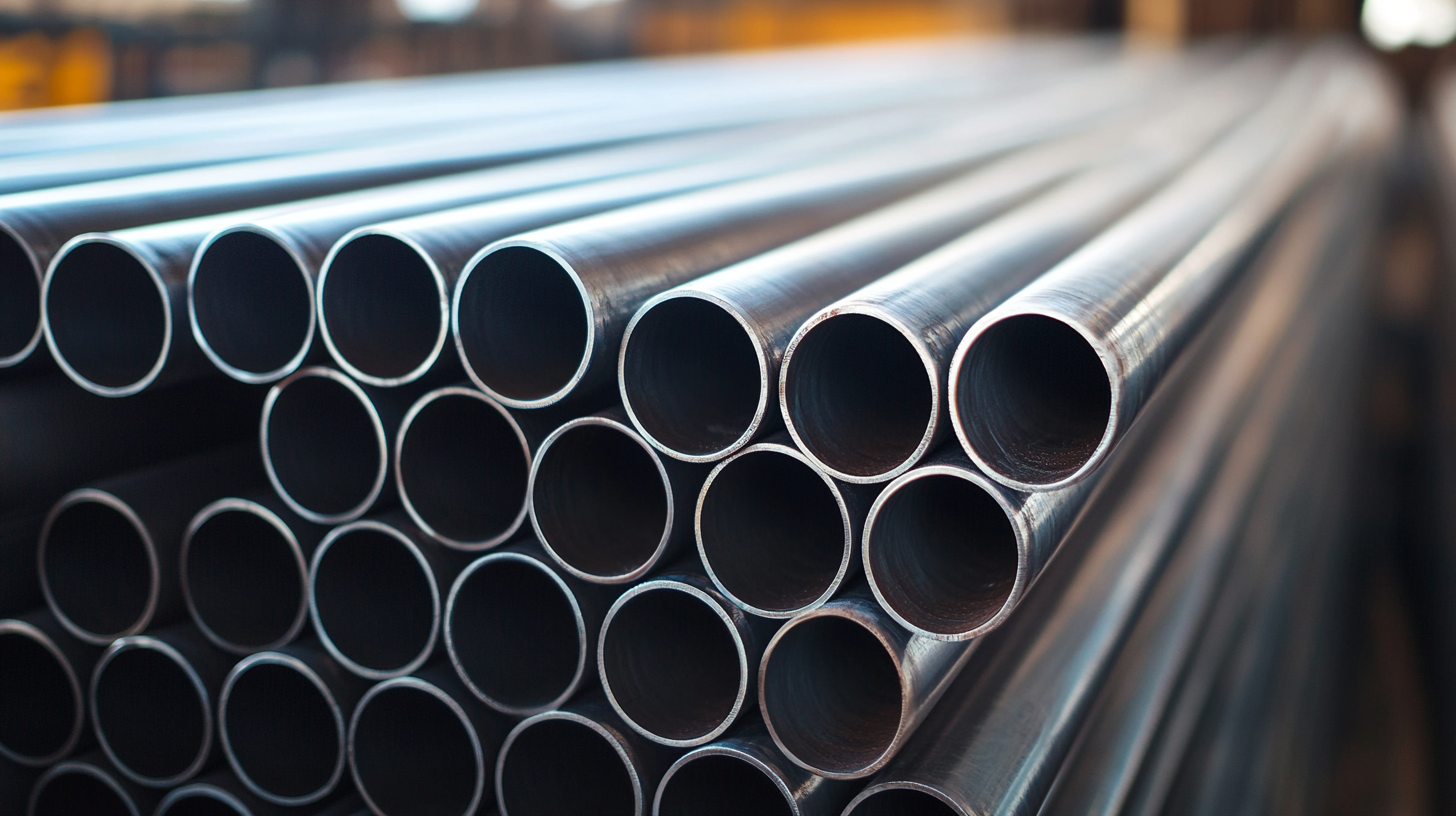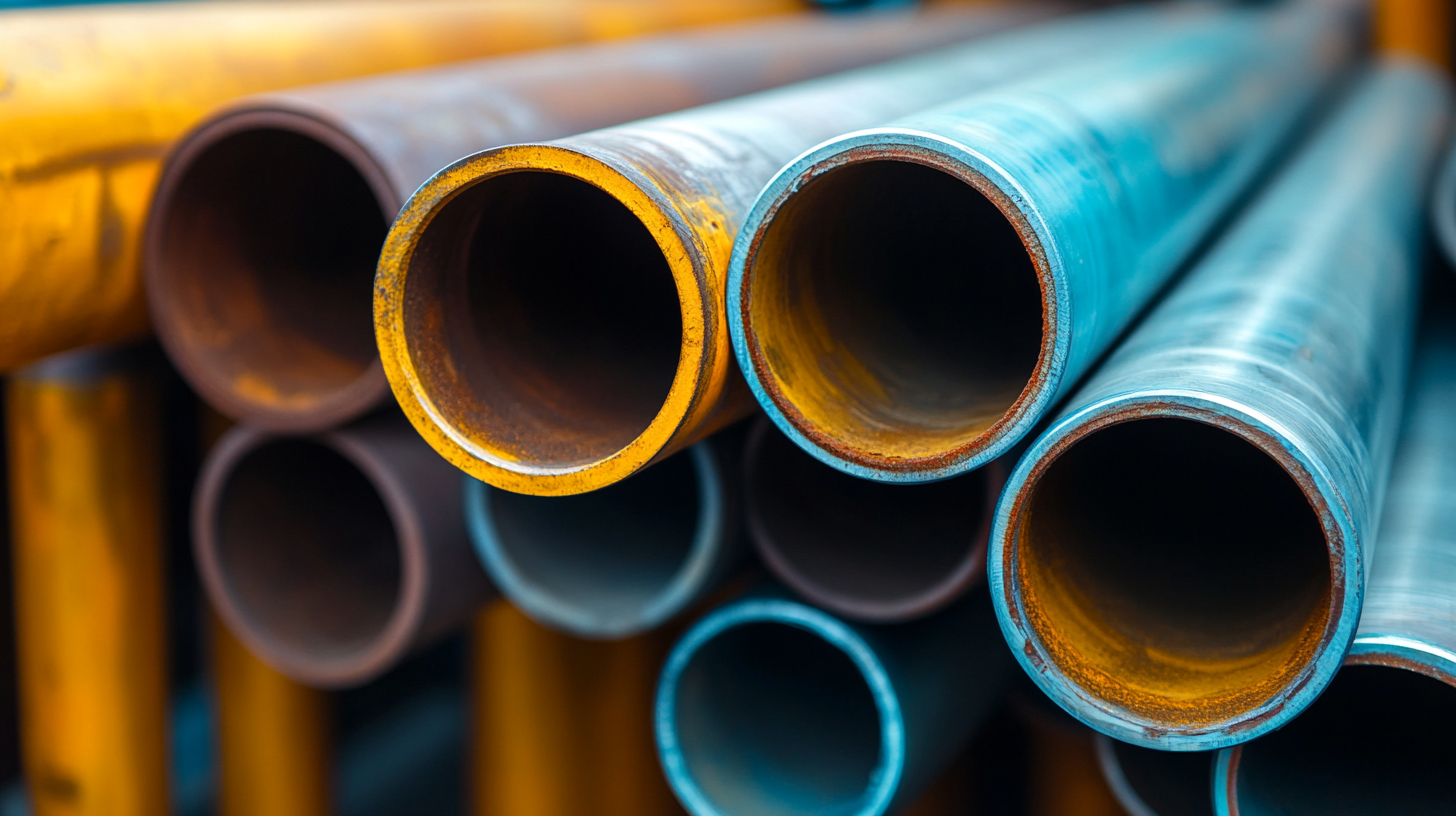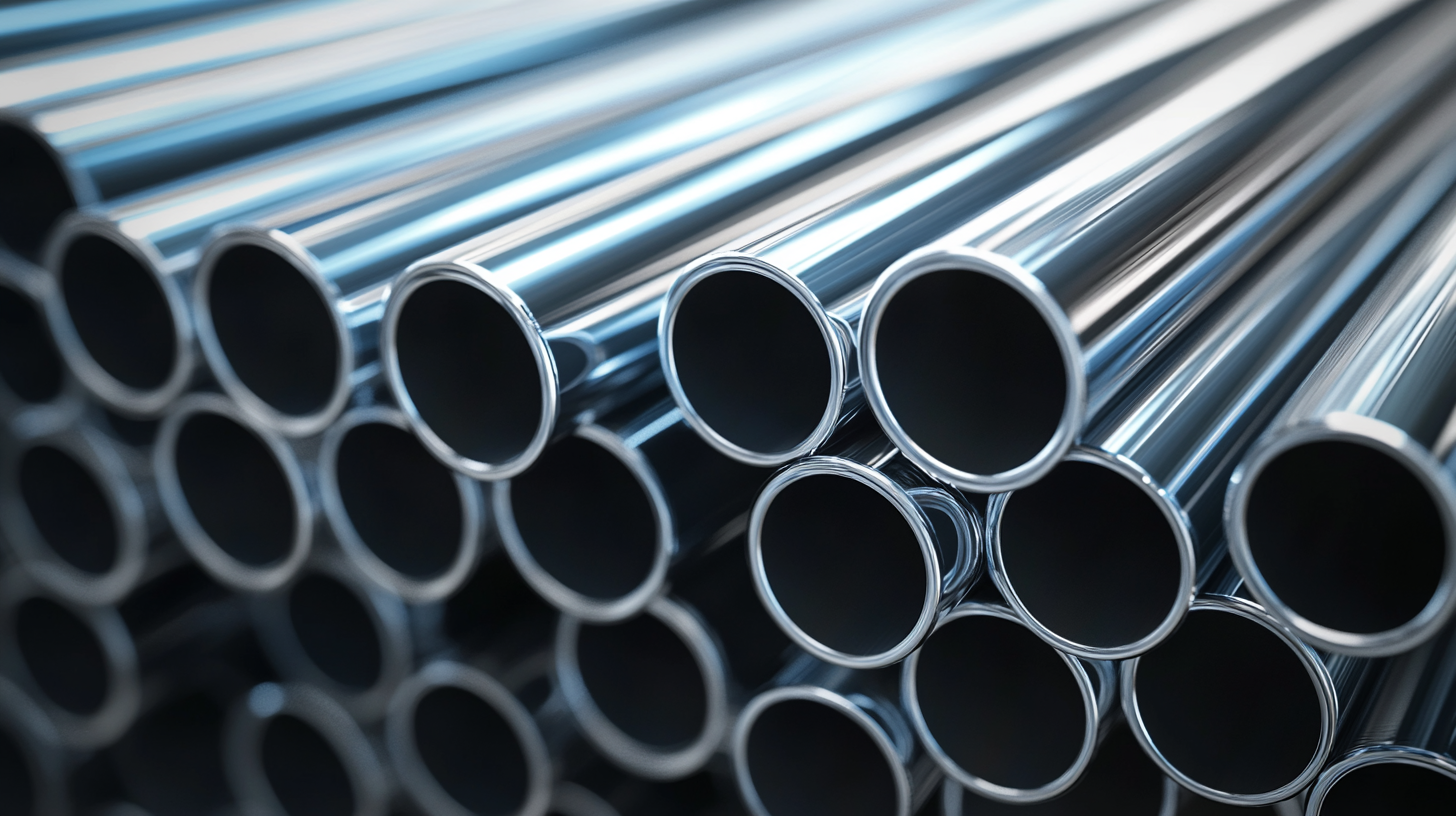The Galvanized Pipe market is an integral part of the global construction and manufacturing industries due to the corrosion-resistant and long-serving properties of these pipes. According to the latest report by the Markets and Markets, the industry for galvanized pipes is expected to grow at a significant pace at a CAGR of nearly 5% from 2023 to 2028. Increasing the durability demand for piping in applications such as residential plumbing, agricultural irrigation, and industrial systems will drive this growth. The emerging economies' ongoing infrastructure projects would further spur the demand for galvanized pipe in new constructions.
In 2025, stakeholders will need to be apprised about the various trends and insights into the galvanized pipe market if they want to benefit from new opportunities. The galvanized pipe market is projected to grow to USD 3.5 billion by the end of their forecast period, according to Technavio. This estimate rests on the foundation of urbanization and industrialization, marking bright prospects in the days to come for galvanized pipes as they are fast becoming the favorite of choice in the reliability and cost gain areas. This blog will examine trends, challenges, and competitive insights shaping the galvanized pipe market landscape, fostering a comparative advantage in better positioning within this sector.

Trends in the galvanized pipe market are moving in a very significant manner toward 2025, driven by numerous factors that are impacting supply and demand. Industrialization is devotedly sustaining growth through increases in infrastructure investments in developing countries. This thus increases the requirement for strong piping solutions, thus placing galvanized pipes as key constituents in any building and plumbing activities. In addition, steel price fluctuations will come to dictate the workings of the galvanized pipe industry. As rebar prices have been trending downward in the past few months across the globe, manufacturers might adopt a downward price strategy for galvanized pipe products, further ensuring competitiveness of the products. Besides, how well the Chinese economy affects the steel market in the world will be very important tips for other stakeholders to look out for. With industries moving toward a green path, demand will unroll gradually for hot-dip galvanized steel that mirrors the general consumer demand for construction materials that are durable and resilient.

As the year 2025 approaches, the galvanized pipe market landscape is fast changing, with many notable tendencies surfacing in both the global and regional perspectives. The recently held International Conference on Galvanized and Pre-Painted Products had participants discussing several anticipated signs of recovery in the market, giving positive prospects for production and consumption in the future.
On the regional scale, the pipe production in the European Union is expected to see modest growth within 2024-2025, in contrast to the declines of 2023. This industry remains resilient despite this onslaught of economic challenges, and an increasing demand for hot-dip galvanized products, seen at a global scale, is strongly boosting the market. Another major factor affecting the market is still the impact China has on the steel industry across the globe; thus, we can have varying rates of profitability and performance across the different regions.
Amidst all these changes, the galvanized pipe market continues to be an important fraction of the larger steel industry, expected to generate revenue in coming years as it maneuvers through the intricate dynamics of the world.

Innovations in manufacturing techniques for galvanized pipes are now turning upside down many old traditions of the job as regards the rising number of demands from various sections of industry. The introduction of elements of modern technology such as automation and advanced coating processes has been a good boost in production efficiency and product quality. The present global trend toward sustainability is in fact embraced by manufacturers who now are going green through recycling and energy-efficient methods.
China's importance cannot be ignored when it comes to the steel industry, and in particular within the galvanized pipes segment. These twofold production capacities and inaugurated pricing policies to determine what eventually becomes of the market behavior in the entire world. As the emerging markets start to see the advantages resulting from having galvanized pipes, such as durability and corrosion resistance, competition is bound to get tougher. This likely situation indicates that the sector would be witnessing healthy growth and, consequently, judging by it, the hot-dip galvanizing market has promising growth ahead, thus making it necessary to keep innovating techniques for future manufacture.

The galvanization of pipes is one market that has undergone a lot of changes lately, mostly with regard to environmental sustainability and its impact. With the nation's strive to lower its carbon footprint, the demand for small-diameter galvanized pipes, which are well-acknowledged for their application in corrosion resistance, is building up gradually. An interesting outline is that of Albania, which has become prominent in this trade sector wherein fast-growing infrastructural development is spurring the demand for high-quality hot-dip galvanized steel pipes.
Environment means everything to the future of the zinc-coated pipe sector. Sustainable practices include using materials that are recyclable and cause less harm to the environment. Production processes should be upgraded with an emphasis on environmental friendliness; thus, they would not only meet environmental regulations but also satisfy the growing consumer demand for environmentally friendly products, setting the amid zinc-plated market up for the coming years.
The future of the galvanized pipe market binds itself to huge possibilities in the coming years leading up to 2025, as the industrialization and infrastructure developments continue to rise at a global level. By a steady global growth of the steel pipe market, galvanized pipes are expected to depict a growing application demand in a variety of industrial as well as construction and manufacturing sectors.
Yet it is not all good news, for there have remained obstacles in its way. The most remarkable feature is the massive slump in the market for flat rolled steel coils, which along with other factors has affected the ancillary industries. As a result, the galvanized pipe companies are compelled to ride over the fluctuating phenomenon presented by the application of artificial intelligence and other technological advances to the enhancement of cost efficiency and maximization of production. These are going to be part of the dynamics that will define the situation of the galvanized pipe market in the many years to follow.
The galvanized pipe market is experiencing a dynamic landscape, with anticipated recovery signals for market production and consumption, particularly within the EU showing moderate growth, and a rising global demand for hot-dip galvanized products.
China's production capabilities and pricing strategies significantly shape global steel industry dynamics, impacting profitability and performance of galvanized pipes across various regions.
Modern technologies such as automation and advanced coating processes are enhancing production efficiency and quality, while manufacturers are also adopting eco-friendly practices to cater to the growing demand for sustainability.
Galvanized pipes are known for their durability and corrosion resistance, making them a preferred choice as emerging markets increasingly recognize their benefits.
In response to consumer demand and regulatory standards, the industry is shifting towards utilizing recyclable materials and adopting production processes that have a lower environmental impact.
Albania has become a key player due to accelerated infrastructure development, driving the demand for high-quality hot-dip galvanized steel pipes.
The hot-dip galvanizing market is projected to rise due to increased industrial demand, the need for corrosion-resistant products, and competitive advancements in manufacturing.
The galvanized pipe market is poised for growth as it adapts to complex global dynamics while meeting the increasing consumer demand for sustainable products.
Manufacturers are integrating eco-friendly practices, such as using recyclable materials and energy-efficient processes, to enhance their sustainability efforts in production.
As industries strive to reduce their carbon footprint, the demand for galvanized pipes, with their corrosion resistance and sustainability benefits, is on the rise.